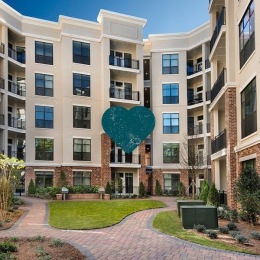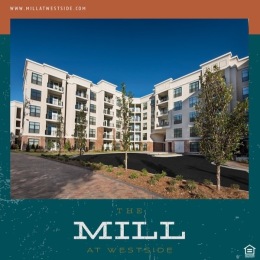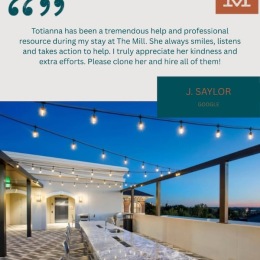West Midtown: Where the Past
and Future Work Side by Side
A neighborhood of creativity and character—equal parts heritage and innovation,
grounded in authenticity yet always in motion.
Opening Scene: A Comeback Story with Texture
If West Midtown’s story were a documentary, it would open in morning light: the camera gliding over brick and steel, sawtooth roofs, a ghost rail spur, a faded stencil on a warehouse wall. The narrator would pause and say, "This is where Atlanta learned to build things."
West Midtown didn’t just recently emerge—it staged a major comeback. And instead of erasing its past, it kept the brick, the timber, the rail lines—and rewired them for modern life. Here, the industrial bones still serve their purpose daily, not as relics but as foundations. West Midtown didn’t trade its past for its future; it set them side by side and pressed record.
Foundations: Where Industry Once Roared
A century ago, this neighborhood thrummed with labor and ambition. White Provision packed the city’s meat. Miller Union Stockyards sorted cattle by rail. King Plow forged tools that tilled Georgia soil. Puritan Mill made soaps under great timber trusses. At the eastern edge, Atlantic Steel glowed orange against the night sky.
That lineage isn’t trivia—it’s DNA. Walk Howell Mill or West Marietta today and it’s all there: riveted beams, century-old masonry, windows spilling daylight onto scuffed sidewalks. It’s the physical memory of how Atlanta learned to stand on its own.
Authenticity: The Rarity of What Remains
As the district transformed, it did something rare—not just for Atlanta, but for the entire Sun Belt: it kept its soul.
King Plow’s old brick factory became an arts campus where Terminal West’s live bands pulse beneath relic machinery. Puritan Mill transformed into a skylit events and office landmark, 1921 timbers intact. Westside Provisions District stitched together a 1910 meatpacking plant and abattoir with a graceful footbridge, now home to design-forward shops and restaurants. Westside Paper reimagined the old Atlanta Paper Company as a creative hub, while The Goat Farm stayed beautifully unrefined—an artists’ colony humming with invention.
This isn’t nostalgia; it’s authenticity, visible in the notched beams, the scarred floors, the hand-restored windows. It’s real.
Innovation Next Door
The neighborhood’s modern engine hums from within: Georgia Tech. Founded in 1885, and now with more than 53,000 students and 1,300 faculty, the nation’s #4-ranked engineering school hones its world class pedigree daily while pouring inventiveness and talent into West Midtown. Labs become startups; co-ops become product teams; ideas become companies. It’s not just theory—it’s global intellectual power elevated to practical application.
At the corridor’s southern edge, The Coca-Cola Company headquarters anchors the skyline. This Fortune #97 global icon, ranked the #12 most admired company worldwide, has continued to refine its global expertise since 1892 while mirroring its neighborhood’s blend of creativity, discipline, and reach.
A New Chapter, Drawn by Hand
West Midtown’s rebirth came not from wrecking balls but from tracing paper—a careful crafting by skilled architects who understood homage as much as ambition.
Star Metals layered sculpted residences, offices, and hospitality along Howell Mill, drawing tenants like Nike’s regional tech hub, PrizePicks, Sovos, Outreach, and creative studios. The Interlock stacked tech-friendly offices and the Bellyard Hotel above Puttshack and lively restaurants, creating a day-to-night ecosystem.
Westside Paper hums again with breweries, studios, and restaurants. A few minutes north, The Works turned 80 acres of old industrial into maker spaces, creative offices, and a food hall. Echo Street West links it all to the BeltLine Connector with open-air hangouts and studios. Each project an adapted old structure that creates a new dimension to the neighborhood’s story.
The Natural Encore
Then comes the encore: Westside Park—nearly 280 acres around the shimmering Bellwood Quarry, Atlanta’s largest and most cinematic park. From its overlooks, the skyline peeks over treetops in the heart of a metro of 6.4 million.
Soon, the BeltLine’s Northwest Trail will thread through West Midtown—just a short walk from Mill at Westside—connecting the Westside Trail north to Buckhead then east to Virginia-Highlands and Inman Park. Bike commutes, coffee runs, and park-to-patio weekends will shift from aspiration to every day.
Commerce and Credibility
For businesses, West Midtown’s old brick and its new glass and steel signal both permanence and progress. Star Metals’ creative offices, Atlantic Station’s towers housing Microsoft and Meta, Coca Cola’s HQ, plus nearby banks, law firms, and agencies all coexist with tech hubs and design studios. It’s where legacy and innovation meet and push forward.
After Hours: Where the City Still Glows
Of course, neighborhoods are lived after hours as much as during them, and West Midtown’s playbook is unusually deep.
For over three decades, Bacchanalia has defined Atlanta fine dining. Miller Union, Marcel, The Optimist, Antico Pizza, and Mugo extend that pedigree, all within easy walks. Boutiques and shops—lululemon, Anthropologie, Sid & Ann Mashburn, Warby Parker, Room & Board, Boll & Branch—bring modern retail to century old industrial walls once filled with agricultural commodities.
Recreation blends heritage and fun: Puttshack, Topgolf, Flight Club, and The Painted Duck make games social again. Darts turned into theater, golf reimagined with skyline views, bowling transformed into a social ritual with cocktails and camaraderie. Ormsby’s basement bar overflowing amidst bocce, darts and laughter; Northside Tavern keeping the blues alive under neon; Terminal West driving the beat. The sidewalks still teem with the energy of old Atlanta refusing to fade.
The Real Thing
This isn’t a polished stage set—it’s a living reel. The bricks keep their scuffs, the beams bear their weight, the sidewalks show their imperfections. For those drawn to the genuine, that’s the magic. Real places serving real functions for decades. In them designers now haul samples, engineers sketch on napkins, chefs test sauces, marketers refine pitches—all moving within the same few blocks, animating the neighborhood in real time.
Why It Works—and Why Here
Scarcity - True adaptive reuse at this scale is almost extinct. West Midtown preserved and re-energized its bones, creating enduring demand.
Institutional Gravity - Georgia Tech fuels the talent stream; Coca-Cola and other anchors provide stability and ambition—a continuum from student to startup to Fortune 500 partner.
Connectivity - The BeltLine expansion, accessible street grid, and sidewalks to true destinations turn proximity into motion—meetings, meals, and music within minutes.
Final Frame: A Life Well-Lived
If this were a documentary and paused now—voiceover rising—you’d conclude West Midtown is a place that honors the hands that built it even as it welcomes the minds remaking it. It’s a living lesson in American urbanism, written in steel, brick, and sunlight. It teaches what every great city eventually learns: keep what’s true, adapt what must change, and let the next generation enjoy its turn.
For those drawn to places where history breathes and creativity gathers, few neighborhoods offer such deep rewards. And if you call West Midtown home, your days will echo its rhythm—mornings beneath timber ceilings, afternoons turning ideas into form, evenings when the walk from dinner to darts to blues becomes its own unique storyline—one you’ll be proud to live, and happier still to remember.








